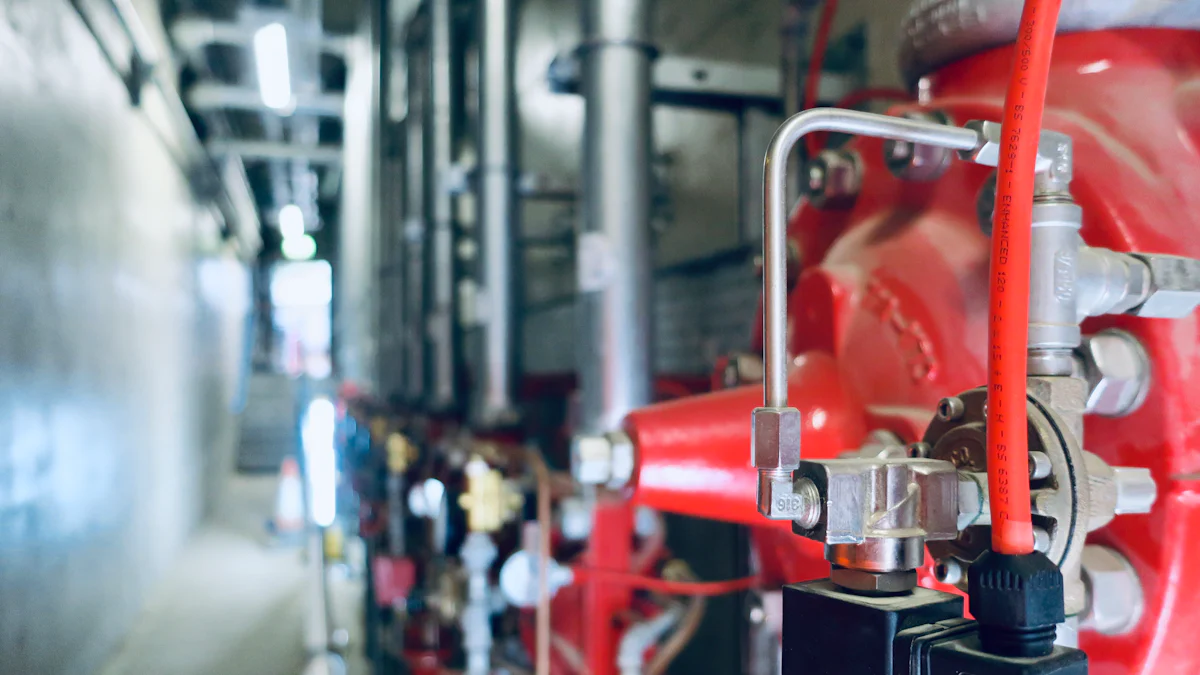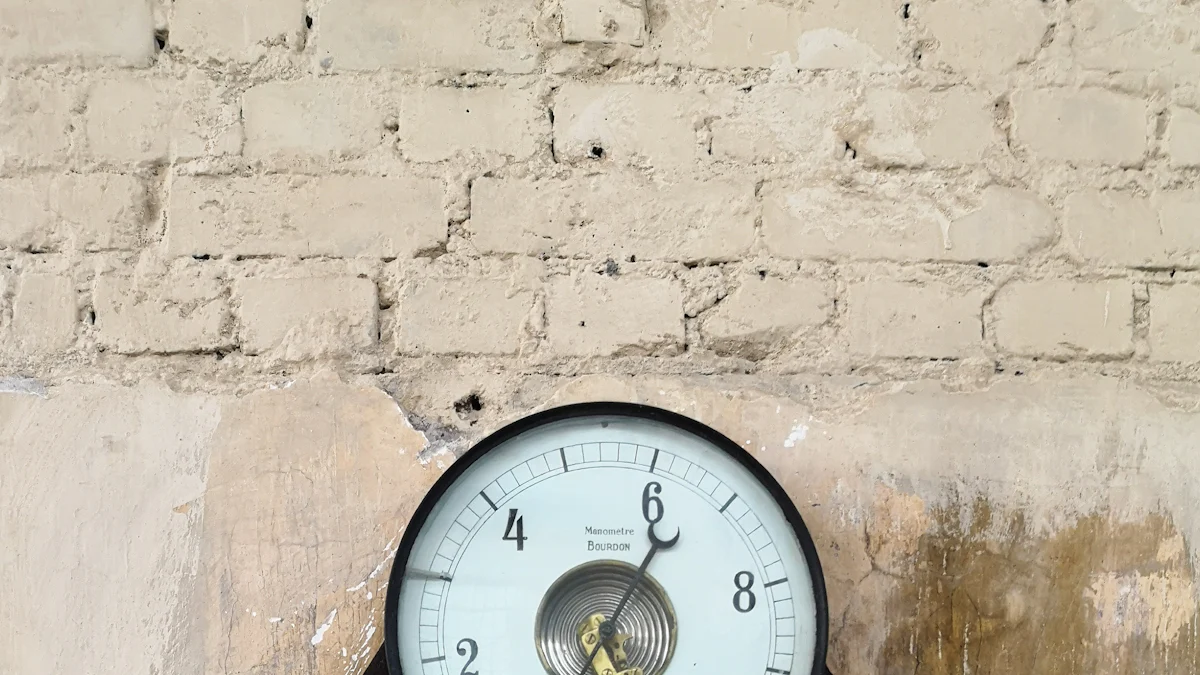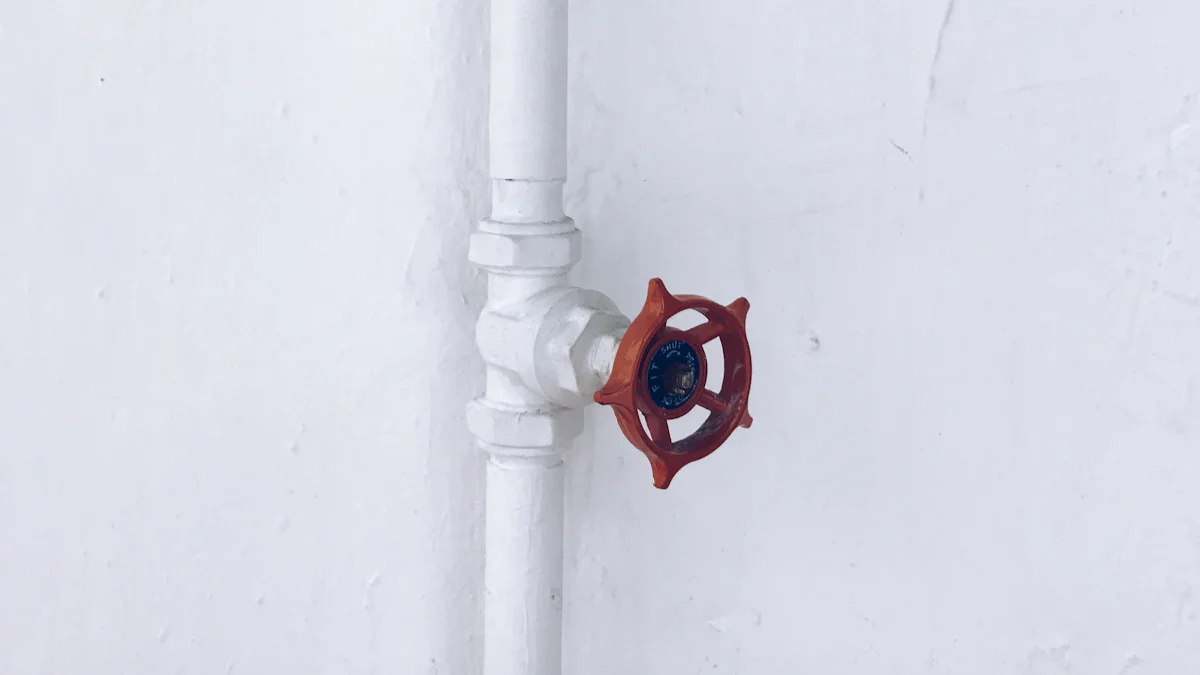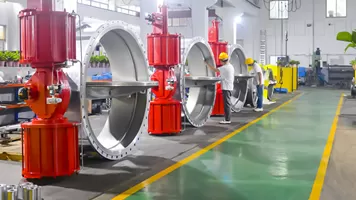
A pressure relief valve is a crucial safety device in various systems, designed to prevent excessive pressure build-up. You might wonder, what does a pressure relief valve do? It acts as a guardian, releasing excess pressure from pipelines or equipment to maintain safe operating levels. This function is vital in industries like petrochemical, power generation, and water supply, where maintaining system integrity is paramount. By understanding what does pressure relief valve do, you ensure the protection of both equipment and personnel, minimizing risks of damage or catastrophic failure.
How a Pressure Relief Valve Works

Understanding how a pressure relief valve operates is essential for ensuring the safety and efficiency of various systems. These valves play a critical role in maintaining system stability by preventing excessive pressure build-up.
Basic Mechanism
Components of a Pressure Relief Valve
A pressure relief valve consists of several key components that work together to regulate pressure. The main parts include:
- Valve Body: Houses the internal components and connects to the system.
- Spring: Provides the force needed to keep the valve closed until the pressure exceeds a set point.
- Disc or Piston: Acts as a barrier that opens to release pressure when necessary.
- Seat: Provides a seal to prevent leaks when the valve is closed.
These components ensure that the valve functions effectively, protecting the system from overpressure.
Operating Principles
The operating principle of a pressure relief valve is straightforward. When the system pressure exceeds the valve’s set point, the spring compresses, allowing the disc or piston to lift off the seat. This action releases the excess pressure, preventing potential damage. Once the pressure returns to a safe level, the spring pushes the disc or piston back onto the seat, sealing the valve.
Common Applications
Pressure relief valves are versatile and find applications in various settings, both industrial and residential.
Industrial Uses
In industrial settings, pressure relief valves are indispensable. They protect equipment in sectors like petrochemical, power generation, and manufacturing. By controlling pressure surges, these valves prevent accidents and ensure the smooth operation of critical processes. Industries rely on them to maintain plant safety and protect personnel from the hazards of overpressure.
Residential Uses
In residential environments, pressure relief valves are commonly found in water heaters and boilers. They prevent pressure build-up that could lead to equipment failure or even explosions. By releasing excess pressure, these valves safeguard homes and ensure the safe operation of household systems.
By understanding what does pressure relief valve do, you can appreciate their importance in both industrial and residential settings. These valves not only protect equipment but also enhance safety for everyone involved.
Types of Pressure Relief Valves
Understanding the different types of pressure relief valves helps you choose the right one for your needs. Each type has unique features and applications, ensuring safety and efficiency in various systems.
Spring-Loaded Valves
Spring-loaded valves are among the most common types of pressure relief valves. They use a spring mechanism to hold the disc in place, releasing excess pressure when the system pressure surpasses the set threshold.
Advantages and Disadvantages
- Advantages:
- Simple design and easy to maintain.
- Reliable in applications with no backpressure.
- Quick response to pressure changes.
- Disadvantages:
- Susceptible to wear and tear over time.
- Limited effectiveness in systems with fluctuating backpressure.
Pilot-Operated Valves
Pilot-operated valves offer a more sophisticated approach to pressure relief. They use a pilot valve to control the main valve, providing precise pressure control.
Advantages and Disadvantages
- Advantages:
- Unaffected by back pressure, ensuring consistent performance.
- Bubble-tight operation at higher pressure ratios.
- Cost-effective for larger sizes and less prone to chatter.
- Disadvantages:
- More complex design requires careful maintenance.
- Higher initial cost compared to spring-loaded valves.
Other Types
Beyond spring-loaded and pilot-operated valves, other types cater to specific needs and conditions.
Balanced Bellows Valves
Balanced bellows valves are designed to handle backpressure effectively. They use a bellows mechanism to balance the pressure on both sides of the valve disc, ensuring stable operation.
- Key Features:
- Ideal for systems with variable backpressure.
- Provides reliable performance in harsh environments.
Pressure and Temperature Relief Valves
These valves combine pressure and temperature relief functions, making them suitable for applications like water heaters and boilers.
- Key Features:
- Protects against both excessive pressure and temperature.
- Ensures comprehensive safety in residential and industrial settings.
By understanding these types of pressure relief valves, you can make informed decisions about which valve best suits your system’s requirements. Each type offers distinct advantages, ensuring that you maintain safety and efficiency in your operations.
Selecting the Right Pressure Relief Valve
Choosing the right pressure relief valve is crucial for ensuring system safety and efficiency. You must consider several factors to make an informed decision.
Material Considerations
Compatibility with System Fluids
When selecting a pressure relief valve, you need to ensure that the materials used in the valve are compatible with the system fluids. Different fluids can react with valve materials, leading to corrosion or degradation. For example, if your system uses corrosive fluids, opt for valves made from stainless steel or other corrosion-resistant materials. This compatibility ensures the longevity and reliability of the valve.
Durability and Longevity
Durability is another critical factor. You want a valve that withstands the operational conditions of your system over time. Consider the environmental factors, such as temperature and pressure fluctuations, that the valve will face. Valves made from high-quality materials tend to offer better durability and longevity, reducing the need for frequent replacements.
Operational Characteristics
Pressure and Temperature Ratings
Understanding the pressure and temperature ratings of a pressure relief valve is essential. These ratings indicate the maximum pressure and temperature the valve can handle safely. Ensure that the valve you choose matches or exceeds the requirements of your system. This alignment prevents valve failure and maintains system integrity.
Response Time
The response time of a pressure relief valve is crucial for system safety. A valve with a quick response time can release excess pressure promptly, preventing potential damage. Research by Dasgupta and Karmakar highlights the importance of understanding the dynamics of pressure relief valves to optimize their transient response. Choose a valve with a response time suitable for your system’s needs.
Application Requirements
Specific Industry Standards
Different industries have specific standards and regulations for pressure relief valves. You must ensure that the valve you select complies with these standards. For instance, the petrochemical industry may have different requirements compared to the food processing industry. Adhering to these standards guarantees the safety and reliability of your system.
Environmental Conditions
Consider the environmental conditions where the valve will operate. Factors such as humidity, temperature extremes, and exposure to chemicals can affect valve performance. Select a valve designed to withstand these conditions to ensure consistent operation. By considering these environmental factors, you enhance the valve’s effectiveness and lifespan.
By carefully evaluating these factors, you can select a pressure relief valve that meets your system’s specific needs. This thoughtful selection process ensures safety, efficiency, and longevity in your operations.
Benefits of Using Pressure Relief Valves
Pressure relief valves offer significant advantages in both safety and efficiency. Understanding these benefits helps you appreciate their critical role in various systems.
Safety Enhancements
Pressure relief valves are essential for maintaining safety in any system. They prevent catastrophic failures by releasing excess pressure, thus protecting both equipment and personnel.
Preventing System Failures
Pressure relief valves act as a safeguard against system failures. When pressure builds up beyond safe levels, these valves open to release the excess, preventing potential damage. This function is crucial in avoiding costly repairs and downtime. As experts highlight, properly functioning pressure relief devices are vital for protecting plant personnel and equipment from unexpected overpressure events.
Protecting Equipment and Personnel
By controlling pressure surges, pressure relief valves protect your equipment from damage. They ensure that machinery operates within safe limits, reducing the risk of accidents. This protection extends to personnel, safeguarding them from the hazards associated with overpressure. Plant managers emphasize the importance of prioritizing the proper functioning of pressure relief valves to significantly reduce the risk of accidents and protect the well-being of plant personnel.
Efficiency Improvements
Beyond safety, pressure relief valves contribute to the overall efficiency of your system. They help maintain optimal performance and reduce maintenance costs.
Maintaining Optimal System Performance
Pressure relief valves ensure that your system operates at peak efficiency. By preventing pressure build-up, they maintain stable conditions, allowing machinery to function smoothly. This stability enhances the overall performance of your operations, ensuring that processes run without interruptions.
Reducing Maintenance Costs
Regular maintenance of pressure relief valves minimizes the risk of unexpected failures. By keeping these valves in good condition, you reduce the likelihood of costly repairs and replacements. Experts note that without regular inspection and maintenance, normal wear and tear can lead to leaks, operational inefficiencies, or even safety hazards. By investing in proper maintenance, you save on long-term costs and ensure the reliability of your system.
Understanding what does pressure relief valve do highlights its importance in both safety and efficiency. These valves not only protect your equipment and personnel but also enhance the overall performance of your operations.
Safety Precautions
Ensuring the safe operation of pressure relief valves is crucial for maintaining system integrity and protecting personnel. By following proper installation guidelines and avoiding common mistakes, you can enhance the reliability and effectiveness of these vital components.
Installation Guidelines
Proper installation of pressure relief valves is essential for their optimal performance. Here are some key guidelines to follow:
Proper Sizing and Placement
- Correct Sizing: Ensure that the valve is appropriately sized for your system. An undersized valve may not release pressure effectively, while an oversized one could lead to unnecessary wear and tear. Consult with professionals or refer to manufacturer specifications to determine the correct size.
- Strategic Placement: Install the valve in a location where it can function without obstruction. Avoid areas where dirt, scale, or debris might accumulate, as these can interfere with the valve’s operation. According to Spirax Sarco, flushing the system before installation helps prevent foreign matter from damaging the valve seat.
Regular Maintenance Checks
- Routine Inspections: Conduct regular inspections to ensure the valve remains in good working condition. Look for signs of wear, corrosion, or damage that could affect performance.
- Scheduled Testing: Test the valve periodically to verify its response to pressure changes. This practice ensures that the valve will operate correctly during an overpressure event.
Common Mistakes to Avoid
Avoiding common pitfalls can significantly enhance the safety and efficiency of pressure relief valves.
Overlooking System Compatibility
- Material Compatibility: Ensure that the valve materials are compatible with the system fluids. Incompatible materials can lead to corrosion or degradation, compromising the valve’s effectiveness.
- Pressure and Temperature Ratings: Verify that the valve’s pressure and temperature ratings match your system’s requirements. Mismatched ratings can result in valve failure and potential system damage.
Ignoring Manufacturer Instructions
- Follow Guidelines: Always adhere to the manufacturer’s installation and maintenance instructions. These guidelines are designed to ensure the valve’s optimal performance and longevity.
- Avoid Modifications: Refrain from making unauthorized modifications to the valve. Alterations can affect its functionality and void warranties.
By adhering to these safety precautions, you can ensure that your pressure relief valves operate effectively, safeguarding both your equipment and personnel. Proper installation, regular maintenance, and attention to detail are key to maximizing the benefits of these essential safety devices.
Understanding the function and selection of pressure relief valves is crucial for maintaining safety and efficiency in various systems. These valves play a vital role in preventing overpressure, protecting equipment, and ensuring the safety of personnel. By choosing the right valve and adhering to safety guidelines, you can significantly reduce the risk of accidents and equipment failures. Always consult with professionals when selecting and installing pressure relief valves to ensure optimal performance and compliance with industry standards.


